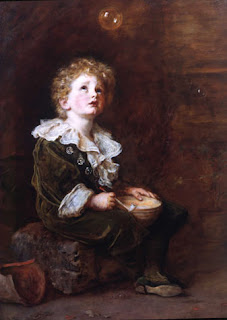Rajput painting, also known as Rajasthani Painting is a style of Indian painting, evolved and flourished during the 18th century in the royal courts of Rajputana, India, flowing from the style of Mughal painting, itself derived from the Persian miniature. Each Rajput kingdom evolved a distinct style, but with certain common features. Rajput paintings depict a number of themes, events of epics like the Ramayana and the Mahabharata, Krishna’s life, beautiful landscapes, and humans.
Wednesday, May 5, 2010
Miniature
The word miniature, derived from the Latin minimum, red lead, is a picture in an ancient or medieval illuminated manuscript; the simple decoration of the early codices having been miniated or delineated with that pigment. The generally small scale of the medieval pictures has led secondly to an etymological confusion of the term with minuteness and to its application to small paintings especially portrait miniatures, which did however grow from the same tradition and at least initially use similar techniques.
Posted by samir at 9:43 AM 0 comments
Monday, May 3, 2010
Bubbles
Bubbles, originally titled A Child's World, is a painting by Sir John Everett Millais that became famous when it was used over many generations in advertisements for Pears soap. During Millais's lifetime it led to widespread debate about the relationship between art and advertising.
Posted by samir at 12:02 PM 0 comments
Han van Meegeren
Han van Meegeren (10 October 1889 in Deventer, Overijssel – 30 December 1947 in Amsterdam), born Henricus Antonius van Meegeren, was a Dutch painter and portraitist, and is considered to be one of the most ingenious art forgers of the 20th century
Posted by samir at 11:49 AM 0 comments
Upper Rhenish Master
The denomination Upper Rhenish Master refers to an artist active ca. 1410-20 possibly in Strasbourg. The most famous painting of the artist is Paradiesgärtlein (Little Garden of Paradise), a mixed technique on oakwood, 26.3 x 33.4 cm, now in the Städel Museum (on permanent loan from the Historical museum in Frankfurt since 1922). The painting is the Städel's most famous example of the old German school.
Posted by samir at 11:45 AM 0 comments





